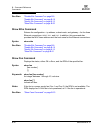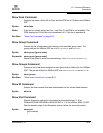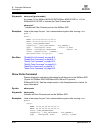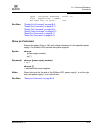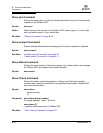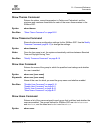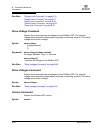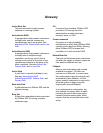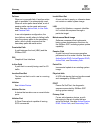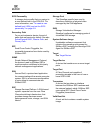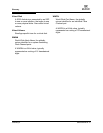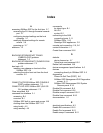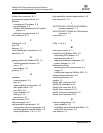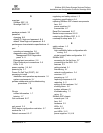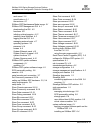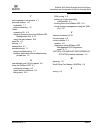
Glossary-2 SN0054628-00 A
Glossary
Q
Failover
When an in-use path fails, if another active
path is available, it is automatically used.
When all active paths have failed, a set of
passive paths can be made active and
used. See also Active Path, In Use Path,
and Passive Path.
In an active/passive configuration, the
term failover usually refers to failing traffic
from the primary paths to the secondary
paths, which usually requires that the
secondary paths be made active.
Front-side Path
A path between the host (HBA) and the
SANbox SSP.
GUI
Graphical User Interface
In Use Path
A path that is currently being used for I/O
traffic.
Inactive Boot Set
The boot set that is not in use in a running
system.
Initiator
See Initiator Device.
Initiator Device
A device that contains one or more initiator
ports.
Initiator Port
A Fibre Channel port capable of issuing
SCSI commands.
Invalid Boot Set
A boot set that is empty or otherwise does
not contain a usable system image.
LUN
Logical Unit Number, a numeric identifier
for a virtual disk exposed through a
particular target.
Maintenance Mode Image
Software component that implements
basic system maintenance functions for
the SANbox SSP, including system update
capability.
Passive Path
A path that must have some operation
performed on it to make it Active. See also
Active/Active RAID, Active/Passive RAID,
Active Path, and Secondary Path.
Patch File
Incremental update to an existing system
image.
Physical disk
A SCSI disk device that can be discovered
and managed by SANbox SSP.
POST
Power-On Self Test, the diagnostic
sequence executed by SANbox SSP
during system startup.
Primary Path
For an active/passive device, a path
belonging to the set of paths that are
active by default. See also Active/Passive
RAID, Active Path, and Secondary Path.



